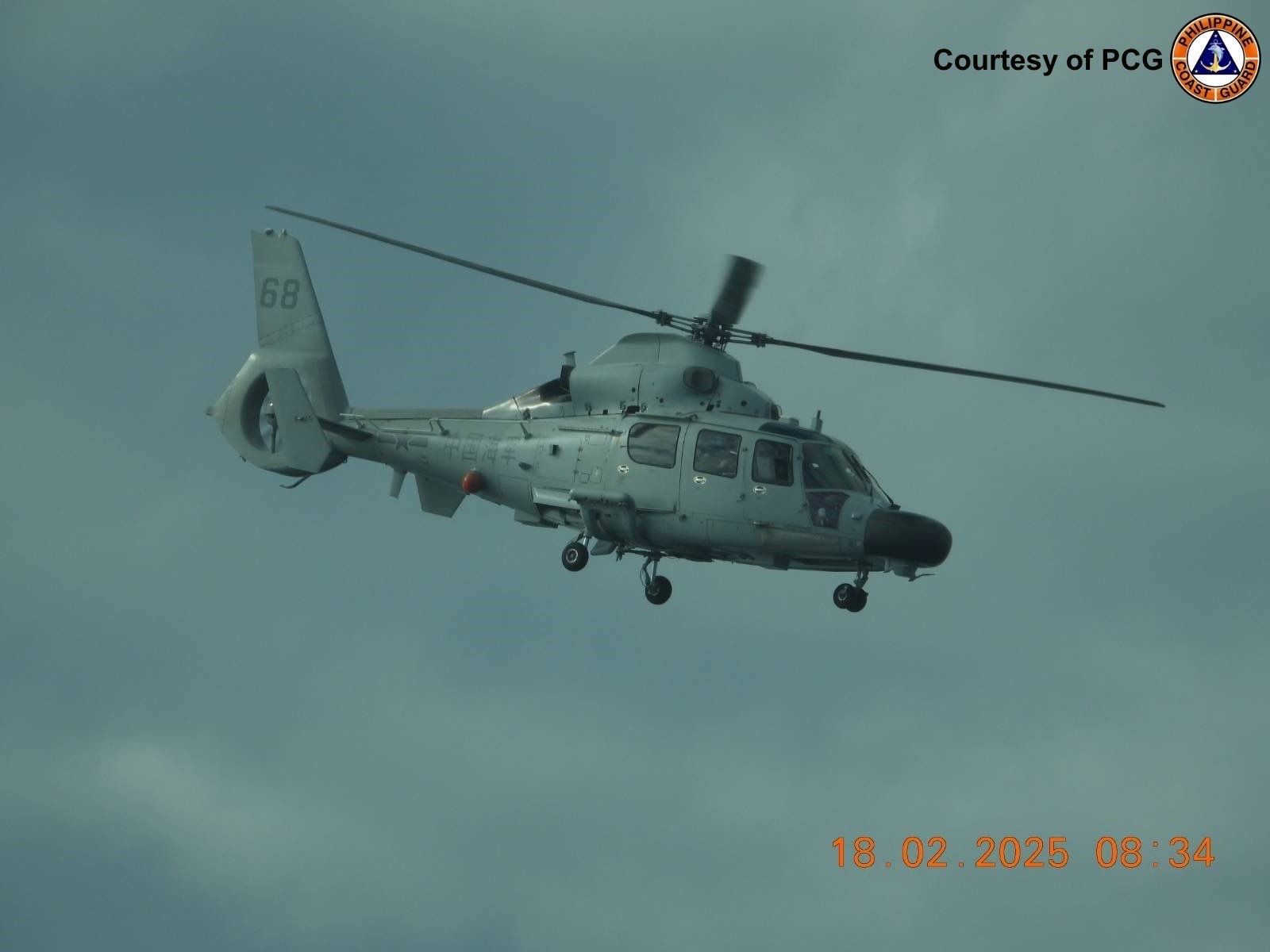China's aircraft harassment a disaster waiting to happen, PCG warns

The Philippine Coast Guard (PCG) condemned Wednesday, Feb. 19, the reported harassment of a Bureau of Fisheries and Aquatic Resources (BFAR) plane by a Chinese military helicopter over Bajo de Masinloc (Scarborough or Panatag Shoal), saying it was a “higher level” of aggression compared to collision of vessels at disputed seas.
Commodore Jay Tarriela, PCG spokesperson for West Philippine Sea (WPS), said the hovering of a People’s Liberation Army – Navy (PLA-N) Harbin Z-9 helicopter above a BFAR Cessna 208B Grand Caravan Ex aircraft while the latter was on a maritime patrol on Feb. 18 was the “most dangerous that they have done against us.”
“The helicopter should have observed the proper and safe distance dahil alam naman natin (we all know) how dangerous it could be. Konting bangga lang (Just a slight bump) with that close proximity can lead to a disaster,” he explained.
According to the PCG, the Chinese military helicopter with tail number “68” came as close as three meters from the BFAR plane.
Tarriela said the close distance of the Chinese military chopper created a propeller wash, or the wind or force generated behind a propeller, which almost destabilized one of the wings of the BFAR aircraft.
“The pilot really had a hard time stabilizing the [BFAR] aircraft while it [PLA-N helicopter] was hovering on top of the [BFAR] aircraft,” Tarriela said.
“I think this is the most dangerous dahil ginawa nila ito (because they did it) while our personnel together with some of our media friends were actually onboard the BFAR aircraft. In terms of the level of dangerous act that they have done so far, for me it’s the most dangerous of all,” the commodore admitted.
Philippines and China’s coast guard ships have collided repeatedly in the past years amid growing tension in the WPS, resulting to injuries of personnel and damage to the ships.
But the PCG highlighted that when two aircraft crash into each other, the possibility of survival is slim to none.
The national government said it would file a diplomatic protest against China over the recent incident.
The apparent aggression of China in disputed areas in WPS appeared to have spilled over to the skies as they now use military aircraft to drive away other countries’ aircraft that they accused of trespassing into their territorial airspace.
Last month, Filipino scientists onboard two BFAR ships were also forced to suspend their marine scientific research and sand sampling on Pag-asa Cay when the PLA-Navy flew a military helicopter and hovered above them to shoo them away.
Fighting malign information through youth involvement
Meanwhile, the PCG inked a memorandum of understanding (MOU) with the National Youth Commission (NYC) and Philippine Information Agency (PIA) to combat malign information about the WPS, especially through the help of the youth.
The agreement was signed by PCG Commandant Adm. Ronnie Gil Gavan, NYC Chairperson Joseph Francisco Ortega, and PIA Director Katherine de Castro.
Through the partnership, the PCG, NYC, and PIA would “work hand-in-hand to enhance public awareness, strategic communication, and youth engagement to foster a more informed and involved society” towards the defense of the WPS.
“We aim to empower young Filipinos with knowledge, inspire nation-building, and strengthen their role in safeguarding our national interests. Pakay natin na hindi basta-basta madadala ang ating mga kabataan tungkol sa mga naglalabasang maling impormasyon pagdating sa West Philippine Sea (We aim to empower our yout so they won’t be easily swayed by wrong information about the West Philippine Sea),” de Castro shared.
For Gavan, he emphasized that the PCG’s fight in the WPS would only be as strong or weak as how they’re able to empower the Filipino people.
“Empowering the people means, foremost, they should know what is the truth, what are the right things involved in the West Philippine Sea,” he noted, recognizing that the “most critical aspect” of the population is the youth.
“The issue on the West Philippine Sea will take a while. It will be a generational activity that we have to deal with, and the success of this country is anchored on how well the youth will carry on the fight for the country,” the PCG chief added.
Representing the youth, Ortega said that young Filipinos may not be in positions of political power just yet, though they hold “an even greater strength – the power of unity, awareness, and action.”
“The youth has always played a crucial role in shaping our nation’s history. Today, we are once again called upon to defend what is rightfully ours, using our voices, our knowledge, and our unwavering patriotism,” he said.
He said the NYC will serve as the primary channel of the government for youth engagement to initiate programs that encourage young leaders to advocate for maritime security, and integrate discussions on the WPS into its youth summits, leadership programs, and community engagements.
“The NYC can mold a generation that is informed and proactive,” Ortega said.